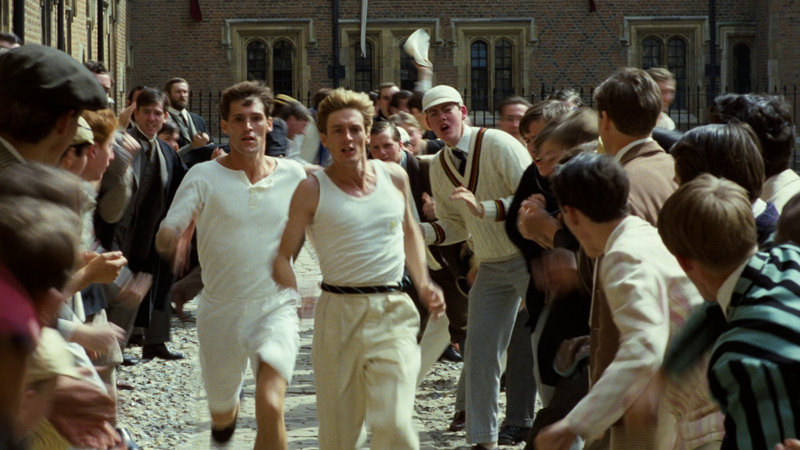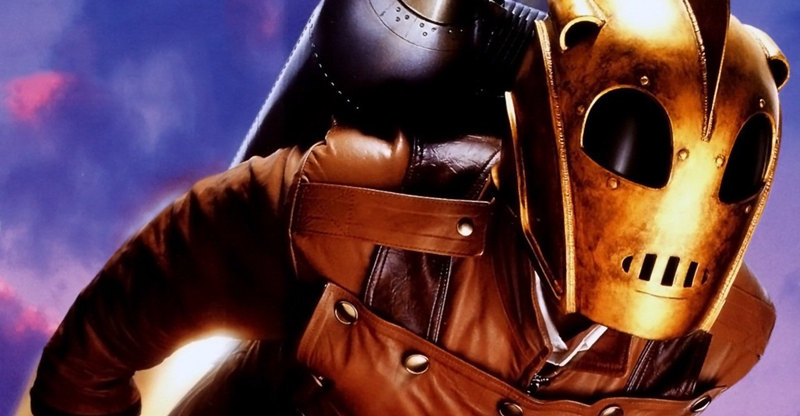Given the law of diminishing returns, I wasn’t exactly looking forward to seeing “Rocky VI” . . . I mean, “Rocky Balboa.”
Since the first “Rocky” (1976)–which was a solid 8 out of 10 movie–each sequel has been weaker than the one before it, until we’re left with the punch-drunk “Rocky V” (1990). What began as a gritty underdog story of a boxer with more heart than brains soon deteriorated into a series of redundancies and caricatures in II (1979), III (1982), and IV (1985). Apollo Creed (Carl Weathers) was one thing, but when you trot out opponents like Mr. T. and a superhuman Russian (Dolph Lundgren), you’re starting down the slippery slope that eventually leads to “Rocky V,” as unnecessary a sequel as there ever was.
I certainly hope that “Rocky Balboa” will be the last Rocky picture, because you know what? It’s surprisingly poignant and rousing, with the same kind of heart and believable storyline as the original. With “Rocky Balboa,” Sylvester Stallone and his alter ego go out on top.
The fighter in Stallone, who created the character and wrote, directed, and starred in what might finally be the last installment, obviously didn’t want the series to end with a flop. Watching a nearly 60-year-old Sly train to build up that six-pack again in the bonus features, you begin to realize that the actor’s comeback is more impressive than 50-something Rocky Balboa’s, or even George Foreman’s, the real-life ex-heavyweight champion who inspired this sequel when he came out of retirement and at age 45 beat Michael Moorer to win the heavyweight title again. That was impressive, but so is Stallone, and not just in the boxing sequences.
He and Burt Young are the only ones to return from previous Rocky films. Milo Ventimiglia replaces Sage Stallone as Robert “Rocky” Jr.; Burgess Meredith died and his character, Mickey Goldmill, is also laid to rest; and Talia Shire was written out of the script, with Rocky still grieving for his deceased Adrian. But Young is back as brother-in-law Paulie, and Geraldine Hughes plays Marie (“Yo, Little Marie!”), the neighborhood girl that Rocky told to stop smoking and hanging out with losers in the first “Rocky.” Now she’s got a grown kid named Steps (James Francis Kelly III), and when Rocky bumps into her he invites the two of them to come to his restaurant.
How right it feels to have Rocky now operating a celebrity restaurant named Adrian’s. It’s what famous athletes, and it gives us a chance to feel some sense of how much Rocky misses the old glory days as he half-entertains and half-annoys his patrons by reliving the Creed fight over and over. Given today’s fantasy sports leagues and computer challenges, it’s right-on that a computer match between retired heavyweight champ Rocky and current champion Mason “The Line” Dixon would spark such interest . . . and draw Rocky out of retirement after the computer simulation has him beating Dixon (Antonio Tarver).
At one point Rocky says, “You know, I think if you live in a place long enough, you are the place.” Noticeable this outing are the shots of Philadelphia, not presented in a dismissive montage, but integrated in quick cuts throughout the film so that they reinforce how much they’re a part of character, and vice versa. Over the years, Stallone has developed an eye for effectively presenting visual information, but his efforts in “Rocky Balboa” are without a doubt his best. Even the insertion of clips from previous Rocky films (all but “V,” which Stallone admits was a picture on the ropes) isn’t as corny, obvious, or intrusive as they could have been. In fact, fans of the series will feed off of those clips and cheer even harder for the Italian Stallion.
Though the big fight this outing is just an exhibition match, with Rocky invited to take on the champ for charity, it’s every bit as exciting as any of the matches in the series. Credit Stallone again for making “Rocky Balboa” a smaller picture in every way, and allowing the larger-than-life character to make it larger. It would have been cheesy had Stallone made his puffy-eyed, brain-addled boxer so full of himself that he thought he could challenge Dixon. No, Rocky’s intentions were more modest. He just got a license because he realized, from watching the computer rematch and evaluating his own life, that his passion for boxing hadn’t left him yet. His intention was to just fight a few no-names locally, and for that we love him. This Rocky is a realist and an idealist, which makes him a movie hero for the ages.
There are nice echoes of the first film and the Adrian years, including a visit to the old pet store and an animal shelter. Rocky is still taking in strays, as embodied in the ex-boxer whom he feeds at the restaurant in exchange for a little dishwashing. Whether it’s Rocky drawling in dead-pan, “Naw, he ain’t dead” about the metaphoric moth-eaten dog he wants to adopt, or Paulie grumbling about “that fake Looney Tune fight” on computers, there are also a lot of nice lines. Stallone wanted Mr. T. and Lundgren to reprise their roles, but you know what? I’m glad they stayed out of the picture. This is one instance where less is truly more, and “Rocky Balboa” is a perfect complement to the original film, as well as a wonderful way to bookend the series.
Video:
Even the screen captures from this film look amazingly sharp. This is the kind of film that was made for Blu-ray, with it’s two worlds of color, one dingy and drab, the other bright and glitzy. Blu-ray makes both worlds look great, with impressive details like wisps of smoke or skin pores sharp as if you were standing right there inside the frame. The 1080p picture, mastered in High Definition, is presented in a 1.85:1 aspect ratio that sprawls completely across a 16×9 widescreen television monitor. A sharp, strong picture, with bright, fully saturated colors in the glitz scenes and no loss of detail in the dark or murky scenes.
Audio:
The featured soundtrack is an English PCM 5.1 uncompressed audio that resonates like a ring announcer asking, “Are you ready to RUM-ble?” The bass is booming, the treble is bright and well balanced against the lower decibels, and there’s good distribution of ambient sounds across the rear speakers. Additional audio options are English and French 5.1, with subtitles in English, English SDH (CC), French, and Spanish.
Extras:
In the “Woo hoo!” category, Sony went with a 50GB disc on this release, so every one of the extras from the standard DVD appear on the Blu-ray. There’s a decent bunch of bonus features, too. For the curious, there’s a handful of bonus features (including an alternate ending that proves Stallone picked the right one) and a very short blooper reel that, in keeping with the PG label, “bleeps” out the bad words. In “Skill vs. Will: The Making of ‘Rocky Balboa,'” we get a pretty standard making-of feature, but there’s enough behind-the-scenes footage and background information to make it worthwhile for fans. The big HBO pay-per-view fight, we learn, was really a pay-per-view event that Stallone got the idea to piggyback off of. After the fight, which had all the banners set up and a real crowd in place (including Mike Tyson, who’s given a brief line), they filmed the Rocky vs. Mason Dixon bout. We get more details in “Reality in the Ring: Filming Rocky’s Final Fight,” which shows Stallone in training. Sixty years old and ripped? Yep. He spent six months getting in shape. Rounding out the features is one on “Virtual Champion: Creating the Computer Fight,” which talks about the inspiration for the idea and what it took to make it work.
But the best bonus feature is Stallone’s commentary. After watching him tawk like dis for 102 minutes it’s a real revelation to be reminded that this guy is one intelligent fellow who points out the things that he was trying to accomplish with the filming. When, for example, Rocky leaves his street-world to meet up with son Robert outside a high-rise building in the city’s financial district, Stallone describes the visually “geometric world” that Rocky’s entering–one which represents a world of greater structure and constrictures. But like the film itself, his commentary is unpretentious, even when it comes to describing his role behind the cameras. “Directing is knowing what you want, and then trying to convey that to 300 people,” Stallone says.
Bottom Line:
Though there were fun moments in several of the sequels, “Rocky” was really the only film in the series that packed a punch . . . until “Rocky Balboa,” that is. This film is as strong as the original, and a fitting requiem for the big screen’s most popular heavyweight. It’s so good that Sage Stallone may one day regret that he declined the chance to play Rocky, Jr. again.


